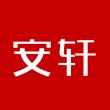
民国教育(英)
全新正版 急速发货
¥ 42.4 4.3折 ¥ 98 全新
库存8件
作者赵峰
出版社五洲传播出版社
ISBN9787508550589
出版时间2023-10
装帧平装
开本16开
定价98元
货号29666098
上书时间2024-12-17
- 在售商品 暂无
- 平均发货时间 14小时
- 好评率 暂无
- 最新上架
商品详情
- 品相描述:全新
- 商品描述
-
前言
Educational reform is an important part of the transformation of modern Chinese society. After the abolition of the imperial examination in 1905, Chinese education experienced earth-shaking changes. The Republic of China had just been founded; but the reforming spirit of the late Qing Dynasty still remained. The May Fourth New Culture brought new ideas to the country. Chinese education, being built upon the Western model, adhered to Chinese tradition and integrated it into the modern times, combining Chinese and Western cultural and educational ideas. These ideas influenced, tolerated, and transformed each other, creating an era studded with educational “stars” including: Chen Yinke, Qian Mu, Liang Shuming, Feng Youlan, Qian Zhongshu, Zhu Guangqian, Hu Shi, Lu Xun, Lao She, Lin Yutang, Cao Yu, Ba Jin, Yu Dafu, Mao Dun, Shen Congwen, Zheng Zhenduo, Zhou Zuoren, Liang Shiqiu, Bing Xin, Hu Feng, Liu Yazi, Zhang Henshui, Xiao Hong, Zang Kejia, Ai Qing, Qi Baishi, Xu Beihong, Zhang Daqian, Li Keran, Feng Zikai, Zhang Boling, Luo Jialun, Yan Yangchu, Tao Xingzhi, Huang Yanpei, Mei Yiqi, Ma Yichu, Shen Junru, Mao Yisheng, Zhu Kezhen, Li Siguang, Tong Dizhou, Liang Sicheng, Xu Zhimo, Mei Lanfang, Nie Er, Su Buqing, Xian Xinghai, Ye Shengtao, and Cai Yuanpei. This list is very long and can be further extended. These are educators who we still admire and respect highly. They can be divided into many categories including philosophers, historians, writers, artists and natural scientists.Nevertheless, no matter how they are classified, they all have one thing in common: that is, they were the devotees of education and cultural undertakings of that era. They also have a common attribute: each of them is called “a great master of education in the Republic of China.”Wisdom is to be gained by learning from the past. “Why are our schools always unable to produce outstanding talents?” That was a question of the century asked by respected Qian Xuesen, a prominent rocket scientist in China. This question is still relevant for our current education administrators and every member of our society to ponder. It is a question that must be faced directly in China’s current educational era. It is also a question that the Chinese nation must face in order to achieve its “great rejuvenation”. Qian’s question was difficult to answer for leaders who came to visit him. Many education officials and education experts still have not given satisfactory answers. It is not in our reach (or power), nor are we in the position to indulge in high-sounding tirades. This book will focus on the era in which Qian was educated and developed, and explore what education was like at that time. It will also discuss the “offcuts” (leftover bits and pieces) that historians dismissed, plus comments from the literati and historical anecdotes of the Republic of China.History is always a mystery, and we are just trying to get closer to the answers. When you become close to the answer, the results may not be as you wish. It is just like a lover you have not seen for many years; meeting them is never as good as missing them. In this sense, history may be another “castle”; a situation where there are two groups of people: those outside the castle who wish to get in, and those inside who can’t wait to get out.
导语摘要全书详细介绍了民国教育史上的民国教育家、民国大学和校长们以及各具特色的民国教育。“民国的大师们”如陶行知、胡适、钱钟书、梅贻琦、张伯苓、蒋梦麟、蔡元培等的教育理念和教育思想影响深远,对我们的教育提升有非常大的借鉴意义。Educational reform is an important part of the transformation of modern Chinese society. After the abolition of the imperial examination in 1905, Chinese education experienced earth-shaking changes. The Republic of China had just been founded; but the reforming spirit of the late Qing Dynasty still remained. The May Fourth New Culture brought new ideas to the country. Chinese education, being built upon the Western model, adhered to Chinese tradition and integrated it into the modern times, combining Chinese and Western cultural and educational ideas. These ideas influenced, tolerated, and transformed each other, creating an era studded with educational “stars”.
目录Chapter 1New and Old‘Real Reform’ in ‘Fake Hundred Days’ Reform’ The ‘Educational Thoughts’ of the MarshalsThe Era of Education MastersThe ‘Educational Dream’ of Female University PresidentsChapter 2Educators in Republic of China (1912–1949)Father of the Mass Education Movement: Yan Yangchu (Y. C. James Yen)Civilian Educator: Tao Xingzhi Vocational Educator: Huang Yanpei Pioneer of Education Modernization: Yan XiuChapter 3Universities and Their Presidents in theRepublic of ChinaSingle-handedly Creating New Peking University: Cai YuanpeiTsinghua University’s ‘Lifetime President’: Mei YiqiFather of Nankai University: Zhang Boling Old Fudan Man: Ma Xiangbo Chapter 4Different Types of Education in theRepublic of ChinaStudy Abroad Arts Education Women’s Education National Southwest Associated University (Lianda)
内容摘要全书详细介绍了民国教育史上的民国教育家、民国大学和校长们以及各具特色的民国教育。“民国的大师们”如陶行知、胡适、钱钟书、梅贻琦、张伯苓、蒋梦麟、蔡元培等的教育理念和教育思想影响深远,对我们的教育提升有非常大的借鉴意义。Educational reform is an important part of the transformation of modern Chinese society. After the abolition of the imperial examination in 1905, Chinese education experienced earth-shaking changes. The Republic of China had just been founded; but the reforming spirit of the late Qing Dynasty still remained. The May Fourth New Culture brought new ideas to the country. Chinese education, being built upon the Western model, adhered to Chinese tradition and integrated it into the modern times, combining Chinese and Western cultural and educational ideas. These ideas influenced, tolerated, and transformed each other, creating an era studded with educational “stars”.
相关推荐
— 没有更多了 —
















以下为对购买帮助不大的评价